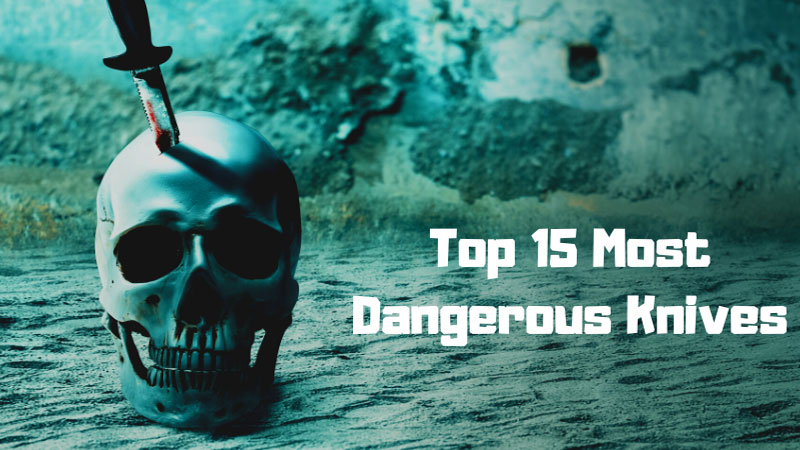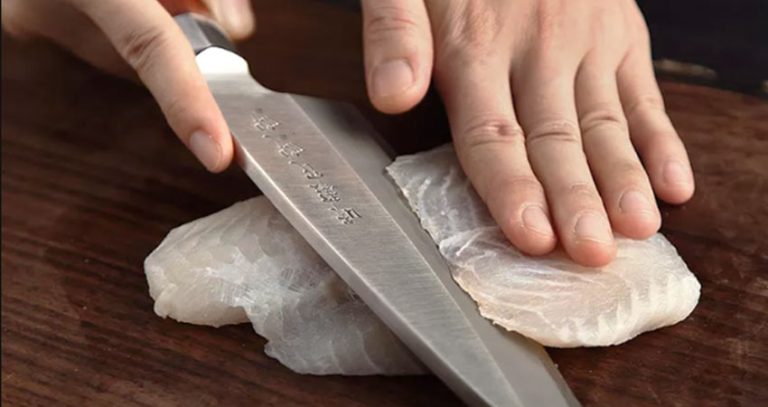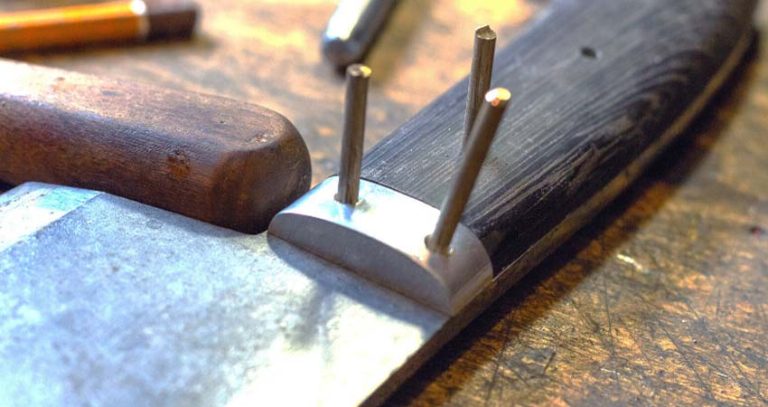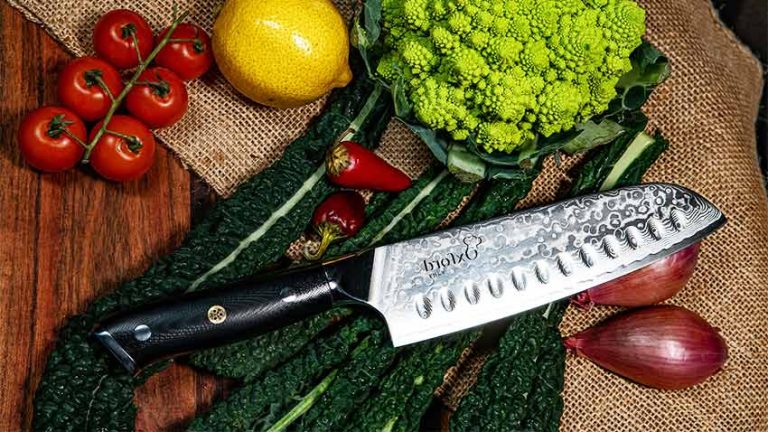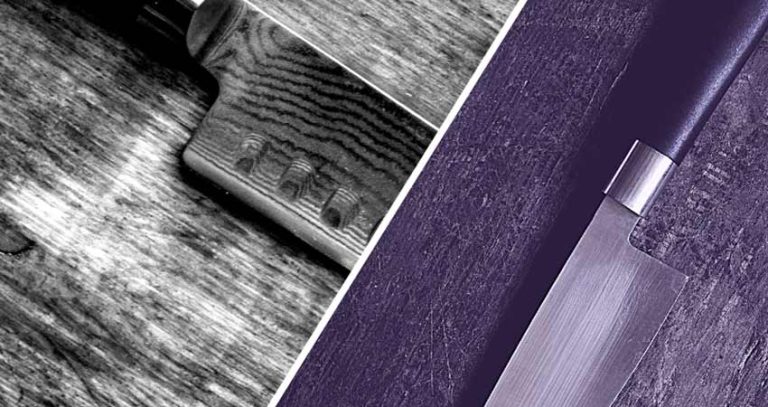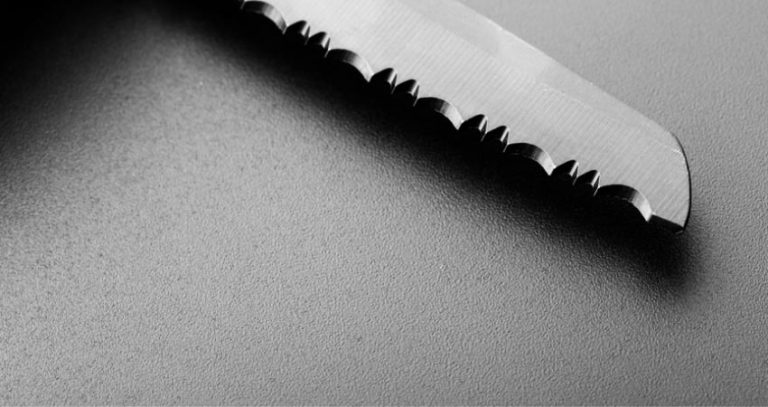Most Dangerous Knives: Uncovering The Top 15
Besides being used as cutting tools since prehistoric times, knives have also been used as weapons.
Today, you can find them in many types, including utility, carving, chef’s, cleaver, and boning knives. But then, what are the most dangerous knives known to man?
They are quite a number, but the WASP injection is the most dangerous knife overall. The tri-edge dagger is another deadly knife due to its spiral cutting edge. Other dangerous knives include the Trench knife, the Ka-Bar, the Stiletto knife, and the Bowie knife.
But wait, there are more! Keep reading to discover 15 of the deadliest knives known to man, their features, and their benefits.
15 Most Dangerous Knives Known To Man
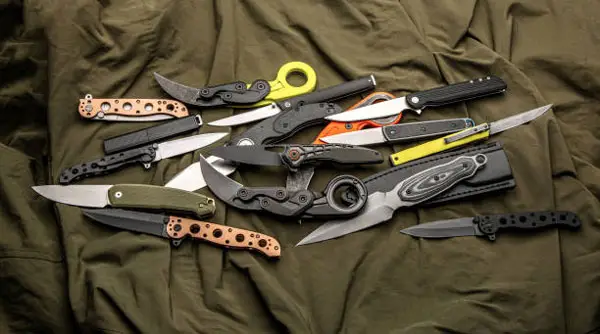
While all knives are dangerous depending on how you use them, some are deadlier than others. Below is a list of the most lethal blades.
WASP Injection Knife
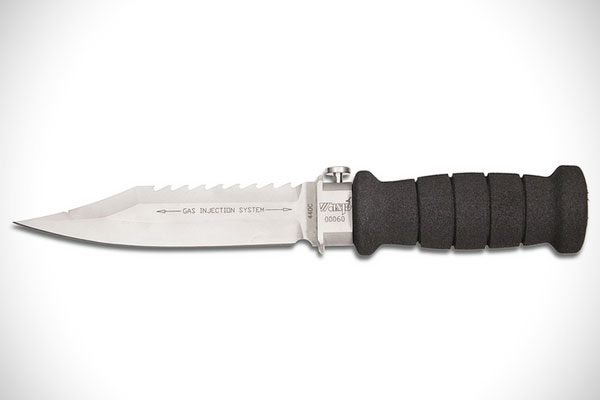
Material: Steel
Special Feature(s): CO2 cartridge
This knife’s carbon dioxide (CO2) cartridge in the handle makes it one of the most dangerous. In addition, the blade boasts a push button.
Once you press this button, it shoots CO2 gas by gas injection system from its tip, freezing all tissues and organs surrounding the injection area.
Besides freezing, it also expands the wound, causing more damage to your target. And because of this, the knife was initially developed for fighting underwater.
Tri-Edge Dagger Or Tri-blade Knife
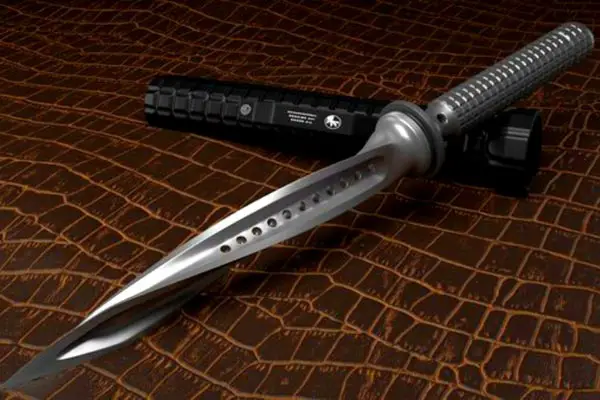
Material: Stainless Steel or aluminum
Special Feature(s): Blade is twisted like corkscrew with a sharp pointed tip
A tri-edge dagger is a fierce knife with three jagged cutting edges curved together in a spiral-like design. However, the edges usually intersect at the end, forming a sharp pointed tip.
It is one of the deadliest knives because its jagged cutting edges deliver maximum internal damage than standard blades. In fact, you can use this knife to disembowel your target by stabbing and then twisting the blade.
Even better, its total length is approximately 7 inches. Therefore, you can quickly wear and conceal it around your neck under clothes.
Trench Knife
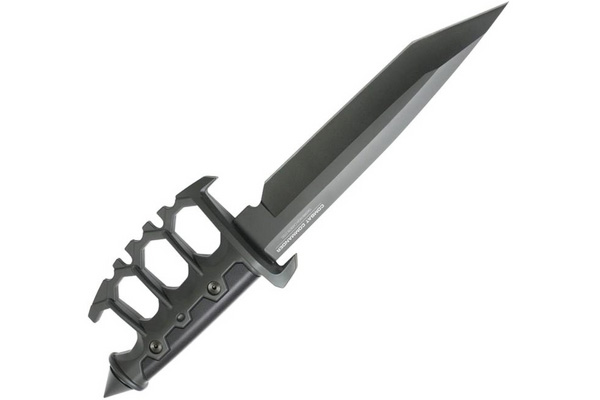
Material: High carbon steel
Special Feature(s): Knuckle duster tang or D-ring guards for safety and precision
U.S. soldiers used the Trench knife during the first World War to battle in the trenches. Today, it is still one of the best close-combat weapons.
However, its knuckles and long and powerful blade make it one of the most dangerous knives. This knife’s knuckles provide extra punching power, while its edge allows quick and lethal stabs.
However, some trench knives boast additional features like a sharpened hook on the handle’s end for pulling or grappling. Others have a serrated edge on the blade.
Ka-Bar USMC Knife
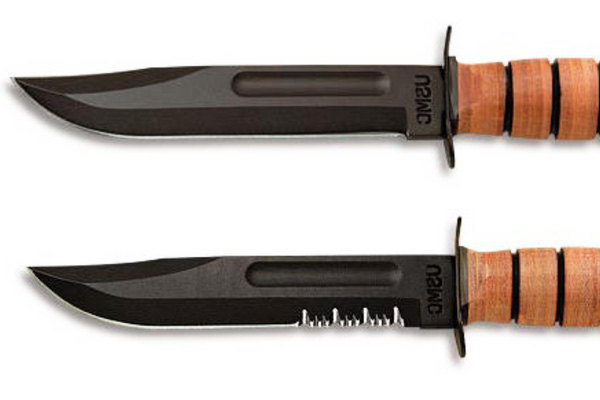
Material: Carbon steel blade
Special Feature(s): Has a stacked leather handle and blade is coated with epoxy powder
Like the Trench knife, the Ka-Bar knife is more of a combat knife. It was initially designed for the US Marine Corps (USMC) during the Second World War.
The knife boasts a 7-inch full-tang blade that works best as a survival, utility, and hunting knife. However, some Ka-Bar knives feature a partially serrated blade with a sharp straight edge, capable of killing a bear.
Stiletto Switchblade Knife
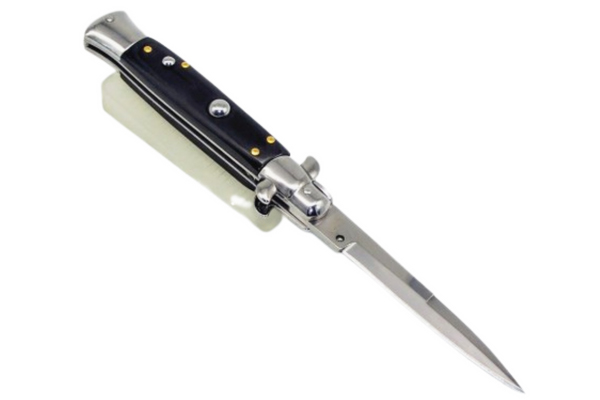
Material: Stainless steel
Special Feature(s): Long and slender blade with needle-like tip for faster and deeper penetration.
This knife was first developed in Italy. It was a preferred weapon by assassins since it was silent, easy to conceal, and its blade could easily penetrate heavy leather clothing.
Today’s stiletto knife features a slender blade and looks like a dagger, making it a powerful stabbing and thrusting knife. The blade also boasts a sharp point designed to penetrate your target’s body deeply.
However, because of its deadly nature, the use of a stiletto knife is restricted in at least 16 states. We are talking about U.S. states such as Washington, D.C., Hawaii, Louisiana, Maine, and Massachusetts.
Bowie Knife
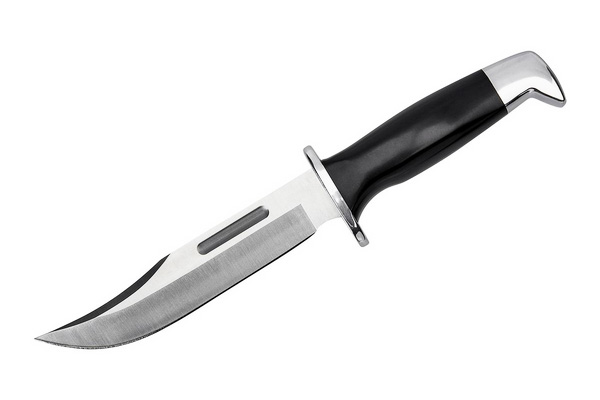
Material: Stainless steel or Damascus steel
Special Feature(s): Available in several blade variations, like folding and double-edged
The Bowie Knife was created by Rezin Bowie in the early 19th century. He developed the knife for his brother James Bowie, a notorious knife fighter.
This fighting knife has a curved top clip angle, making it excellent for various cutting tasks. For instance, you can use it as a kitchen knife for skinning games and cutting heavy-duty materials.
However, its many variations make it one of the deadliest knives. You can choose a Bowie knife with interchangeable blades, double-edged, push daggers, or folding blades.
Karambit Knife
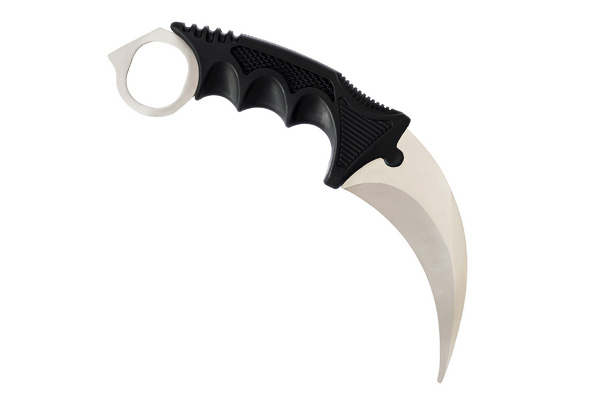
Material: Durable 440C stainless steel
Special Feature(s): Finger ring for enhanced grip and blade is curved in a claw-like shape for precision
This is a small Indonesian knife with a curved, double-edged blade resembling a tiger’s claw. It was initially used as an agricultural tool before being weaponized.
The modern Karambit knife also comes equipped with a hooked blade designed to penetrate through the arteries and other deep body parts. It does this with a single swipe, making it another dangerous knife.
Butterfly Knife
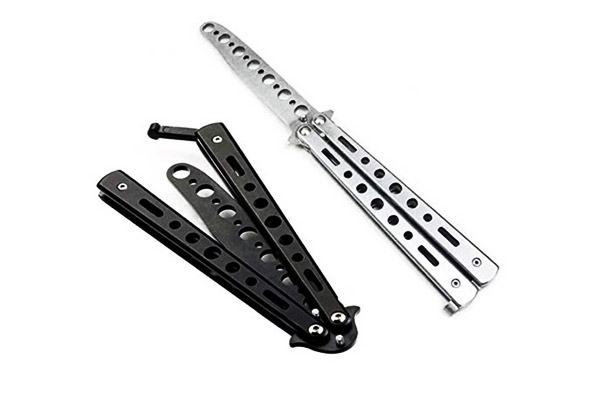
Material: Stainless steel
Special Feature(s): Dual handles counter-rotating around the tang
Also referred to as a Balisong, Batangas, or fan knife, the butterfly knife originated in the Philippines. It was used as a self-defense knife and could bring down a bear with one hand.
One of the unique features of this knife is its two handles designed to rotate around the tang, concealing the blade. Therefore, with enough skill, you can open the knife quickly and harm your attacker.
However, the knife may also be deadly to the user because one blade’s edge is sharp. This may happen when you are flipping the knife to defend yourself.
BC-41 Knife
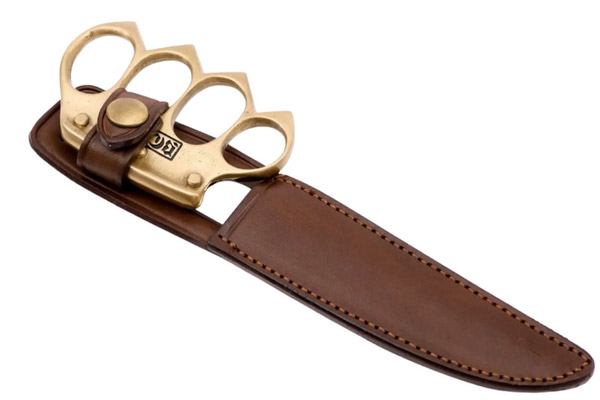
Material: Cast steel blade
Special Feature(s): Aluminum knuckles pinned to the handle
The BC-41 knife was used by the British Commandos for close combat and ambush situations during the Second World War. It combined a dagger and knuckle duster weapon, making it extremely dangerous.
When holding this knife, the single-edged blade usually points side down. So, with minimal skills, it is easy to stab your target or back-slash across the face or chest.
Push Dagger
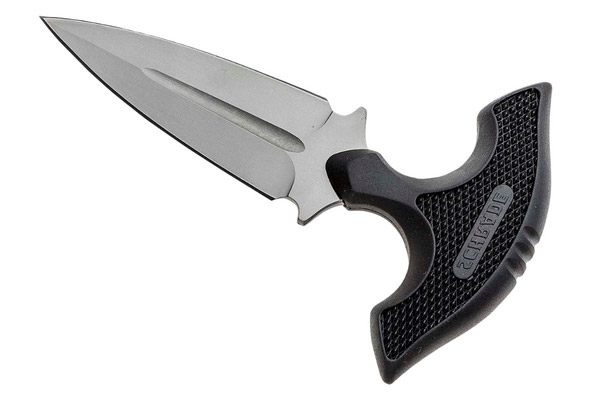
Material: N690 stainless steel
Special Feature(s): T-handle design for better grip
A push dagger, also known as a push or punch knife, was used initially as a close-combat weapon in the early 19th century. The blade boasts a “T” handle for a secure grip, making it difficult for someone to disarm you.
In addition, this knife comes with a thick, short blade powerful enough to thrust into the body with minimal effort. However, like switchblade knives, possessing a push dagger in public is prohibited in some states.
Gerber Mark II Knife
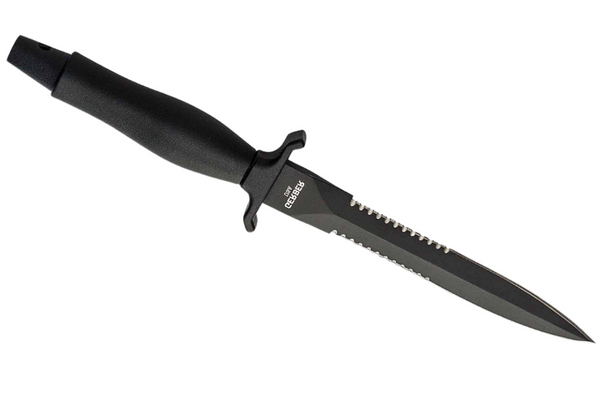
Material: 420 HC stainless steel
Special Feature(s): Double-edged spear point blade
Like the Bowie knife, the Gerber Mark II is a fighting knife used initially during the Vietnam war. Today, it is one of the deadliest knives thanks to its double-
serrated blade designed for maximum piercing.
In addition, the knife boasts a spear point blade with a wasp waist toward the guard. As such, it can quickly get past thick clothing, just like a dagger, injuring and killing your target. And besides piercing, it can act as a spear.
Ballistic Knives
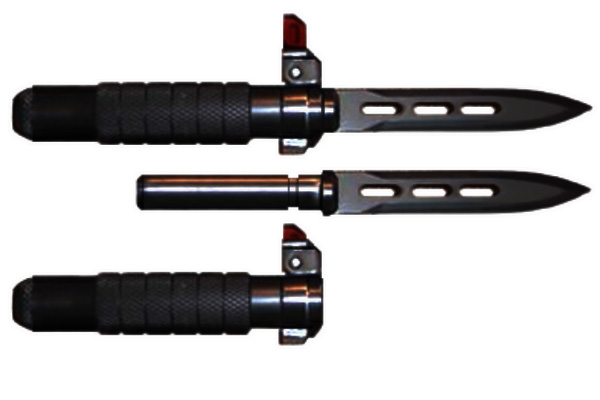
Material: High-quality steel blade
Special Feature(s): Detachable blade, switch on the handle, and spring powered blade
Ballistic knives are built to fire their blades toward the target, similar to how a gun ejects a bullet. These knives feature a spring that propels the edge when you press the switch or operating lever on the handle.
However, some ballistic knives use gas propulsion or compressed air to fire the blade, making them even more deadly. They can fire the blade at a range of around 16 feet and at a speed of 39 mph.
Because of their dead nature, ballistic knives have been banned by U.S. federal law. You can only buy and carry them if you are a law enforcement officer or military personnel.
Common Kitchen Knife
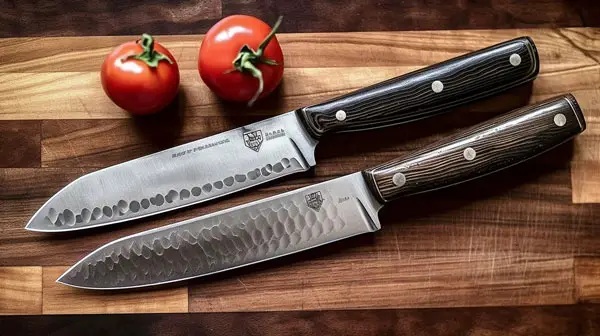
Material: High carbon stainless steel
Special Feature(s): Available in many types with different blade designs
A dull kitchen knife is more dangerous to use to the user than a sharp one. This is because you must apply more pressure to the knife for ease of cutting. As a result, the blade could slip, and the sharp point could stab your leg.
And compared to injuries from a sharp kitchen knife, these are more traumatic. This is because a dull knife usually tears the skin instead of cleanly slicing through.
A sharp kitchen knife is also deadly because it is readily available in every household. In the event of an argument or attack around the house, it is usually the first thing most people seek. It’s no wonder kitchen knives are the most common murder weapon used.
Microtech Jagdkommando Knife
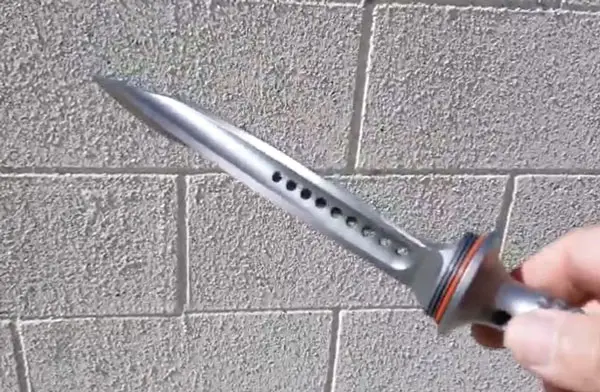
Material: Solid stainless steel
Special Feature(s): Three twisted and sharpened edges
Here is another excellent piece to add to your knife collection if you are looking for one of the most dangerous knives. Its triple-twisted blade design is what makes this knife very deadly. Unlike most knives, this particular one is built to kill and not just injure your threat.
Thanks to its sharp and spiral-shaped blade, this knife can stick to the flesh with a single hit. And as a result, your target could bleed out in minutes if the wound is left untreated for extended periods.
Machete
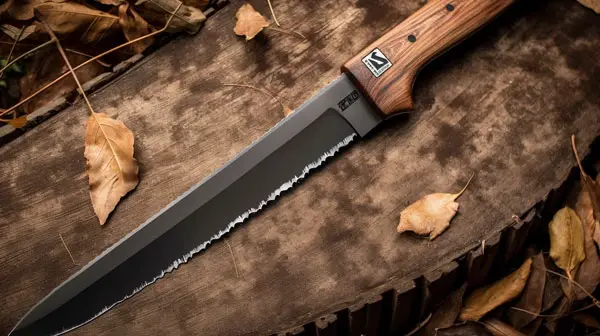
Material: Stainless steel and carbon steel blade
Special Feature(s): Long, sharp, strong, and thick blade
A machete is a large or broad knife featuring a 12-to-18-inch-long blade. It looks more like a cleaver or a short sword. Therefore, besides using it as a cutting or chopping knife, it acts as a defensive weapon.
What really makes it deadly is its sharp and thin blade, capable of stabbing and slashing as well as hacking. In fact, the knife can quickly split skulls thanks to its incredible strength.
What Makes Some Knives More Dangerous Than Others?
Since all knives are deadly, what makes some more dangerous than others? Here are some features to look out for.
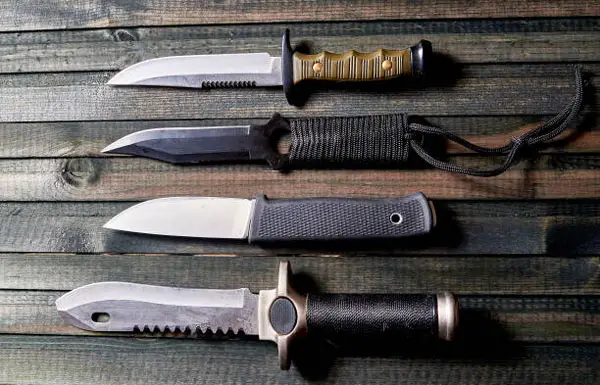
Blade Design
Generally, knives with double-edge blade designs are more deadly than their single-edge counterparts. Similarly, knives with a thinner blade profile and narrow tip penetrate easily without resistance compared to those with thick blades.
Sharpness
A sharp knife is safer than a dull one, especially in the case of a kitchen knife. However, the sharpness of blades like the stiletto, Bowie, tri-edge, Ka-Bar, and butterfly makes them deadlier.
Availability Of Loaded Components
Generally, a knife loaded with compressed or carbon dioxide components is more dangerous. This is because such a blade is designed to fire up with only a button push.
Dagger Style
Any knife featuring a dagger-style blade is very dangerous. This is because such a knife boasts a sharp tip and narrow edge sharpened on both sides. Therefore, you can use the knife as a stabbing or thrusting weapon.
Ease of Accessibility
When a knife is more accessible to everyone, it becomes deadlier than one less accessible. That is why a kitchen knife is one of the most dangerous knives.
Blade Length
Knives with blade lengths ranging between 6 and 7 inches are deadlier. This length is optimal for penetrating through vital organs.
Why Invest In The Most Dangerous Knives?
The primary reason is that these deadly knives are the best weapons for self-defense. Even better, these knives are convenient as you can use them daily for cutting, opening boxes, or hunting.
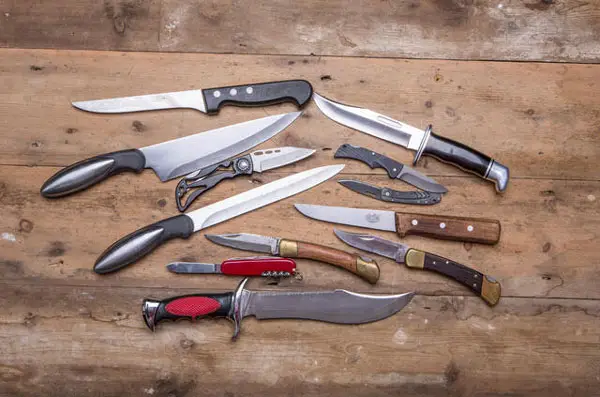
Other benefits of these deadly knives include:
- Effortless to conceal and carry everywhere
- Easy to find and buy
- Training on how to use them is straightforward
- More affordable than other self-defense weapons
- More effective in close quarters than a gun
Note: All knives are not legal to carry for general people. Most deadly knives are designed for commandos, or law enforcement professionals. On the other hand, you have to have legal authorization to have based on your state law.
FAQs
Below we will respond to commonly asked questions regarding the most dangerous knives known to man.
What is the most expensive, dangerous knife known to man?
Currently, it is the Wasp injection knife. Depending on the size, the blade may cost between $400 and $600.
Is it legal to carry the most dangerous knives in public?
No, carrying the deadliest knives in public view is not legal. In various states, there are restrictions on which knives you can have. Some states, like New York and Washington D.C., prohibit carrying stiletto knives. Ballistic knives are also banned across all states.
What is the best killing knife that is most dangerous to man?
It is definitely the Ka-Bar USMC knife with a straight edge or partially serrated blade design. Thanks to its 7-inch-long blade, this knife can penetrate deeply through the body, rupturing delicate organs like the arteries.
Final Note
Overall, the WASP injection knife stands out as one of the most dangerous knives known to man. This is because of the CO2 gas it contains. Other deadly blades worth considering include the Tri-edge dagger, Trench, Ka-Bar USMC Butterfly, Bowies, Gerber Mark II, and Ballistic.
That said, several features make these knives more dangerous than others. Such features include CO2 gas, blade length, loaded components, sharpness, accessibility, and blade design.
Even better, there are many benefits to owning these deadly knives, including being better self-defense weapons and their practicality.

